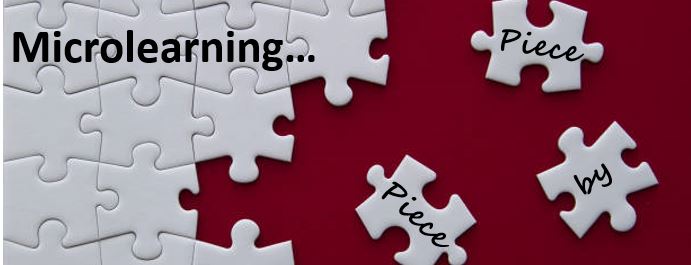By Carla Torgerson and Sue Iannone
In previous articles, we defined microlearning and we described how long (or short) microlearning materials should be. Now, it’s time to move into application. We previously defined microlearning as short content that could be used as preparation before a learning event, follow-up to support a learning event, stand-alone training, and performance support. Here, we describe how you can use microlearning techniques to prepare learners for longer form, live training events.
Why Prepare Learners?
As anyone working in Learning and Development (L&D) knows, live training is expensive. It often takes a lot of time, energy, and money to get everyone together and to plan and execute an effective event. Naturally, L&D pros want to make the most out of every minute of live training to ensure that money is well spent.
So, it makes sense to prepare learners ahead of time. Ideally, learners should come to a live event with enough baseline knowledge and awareness to ensure a productive session…or series of sessions. Learners will get more out of the discussions, role-plays, and other live activities if they’ve done some useful prep work ahead of time.
Why Microlearning for Event Prep?
Most L&D professionals are familiar with having pre-work before a class. But we’re also equally familiar with low completion rates and low impact to the class environment. By its very nature, microlearning is well-suited to the task of preparing learners for live events. Our learners are busy and don’t have a lot of time to do complicated pre-reads or other long-form activities. However, everyone can make time to go through some short-form learning to prepare.
Using microlearning increases the chance that learners will actually review the material and show up ready to roll. In some highly formal environments (like the pharmaceutical industry, for example) learning activities are usually mandatory and tracked. So the learners are likely to go through the materials ahead of time regardless of length. However, they’re much more likely to truly engage with the material and learn something if it’s delivered in ways that work for them. And that usually means in short, bite-sized chunks.
Examples
Here are a few examples of microlearning tools and techniques that you can use to prepare learners for live events. These are just some examples to warm up your thinking, going from simple to more complex. We’re confident you can come up with many more ideas:
- Short Reads – Short articles, fact sheets, or other pre-reads can be very helpful. In the “old days”, we might have sent complicated long-form articles. Nowadays, we know it’s more productive to send short pieces that are thoughtfully distilled to the most important pieces of information.
- Infographics – People really like infographics. They can contain a lot of information in an easy-to-comprehend format. They can be static or interactive.
- Voice-Over Presentations – A brief, annotated PowerPoint can be helpful, as long as the information is relevant and thoughtfully delivered. Again, shorter is better with this non-interactive format.
- Videos – Video clips are a great way to share information quickly.
- Mini-Modules – Mini eLearning modules add interactivity and can create more engagement.
What other approaches have YOU used?
What’s Coming Next?
In our next installment, we’ll explore how you can use microlearning techniques after a learning event to reinforce key learnings and help drive performance on the job.


